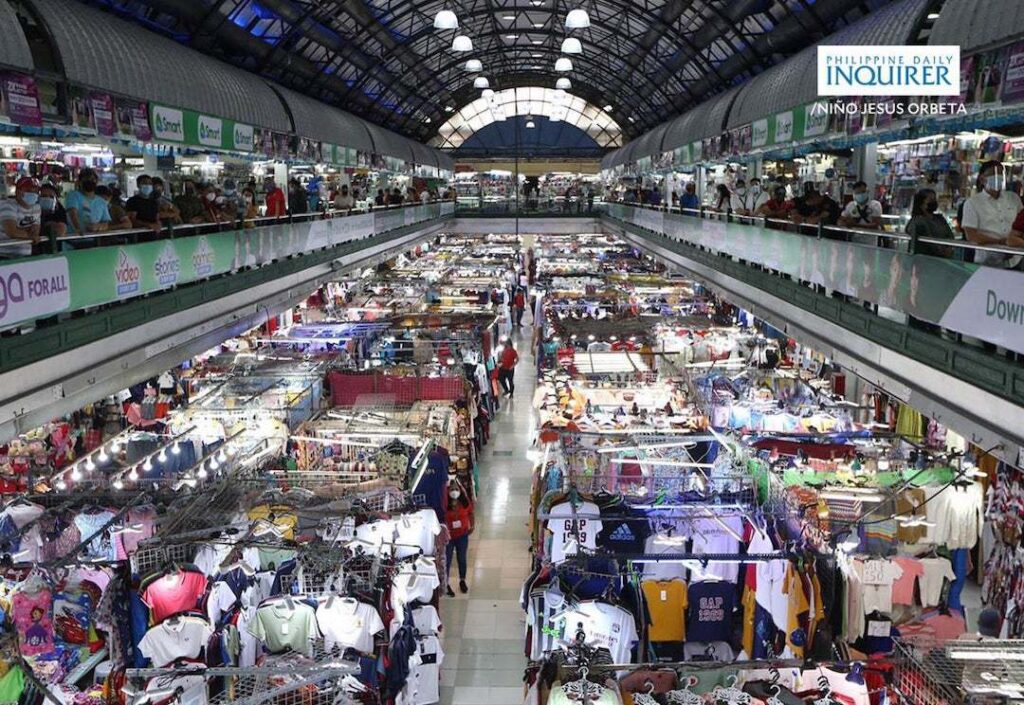What you need to know about tiangge shopping in the Philippines

Photo by Niño Jesus Orbeta/Philippine Daily Inquirer
Tiangge shopping is its own beast in the Philippines. There are places like Divisoria, Greenhills, and Baclaran that are famous for their rows and rows of stalls selling clothes, accessories, gadgets, and anything else under the sun. The main draw of these “tiangges” or bazaars are the variety of items available and their (suspiciously) low prices.
If you grew up outside the Philippines and are visiting one of these places for the first time, it’s best that you go with a family member that’s already knowledgeable in tiangge shopping.
If you grew up outside the Philippines and are visiting one of these places for the first time, it’s best that you go with a family member that’s already knowledgeable in tiangge shopping
These places can be fun but also overwhelming for a first timer (and even some repeat customers). It’s usually filled with literal droves of people looking for the best deals, and it’s also very loud. Depending on where you go, many of these places also don’t have any air conditioning, so the heat is another factor to consider.
If you’re coming home to the Philippines and are considering paying one of these shopping meccas a visit, here are a few things to keep in mind before you go.
Figure out if there’s A/C or not
Philippine weather can be quite unforgiving. On normal days, it’s hot, but sometimes, it can also be extremely humid. Then there’s the seasonal rain, which can make it hot, humid, and unbearably wet.
![[4K] Super Affordable Shopping Tour at 999 DIVISORIA MALL Binondo Manila!](https://i.ytimg.com/vi/4H5DI3rijTA/hqdefault.jpg)
While some tiangges have air conditioning, most do not. If the place you’re visiting doesn’t, wear something light and airy so you don’t have to deal with the possibility of a heat stroke while you’re shopping. A pamaypay (Filipino for a manual hand fan) will be your lifesaver in these situations. Tiangges have a lot of them as well, so you can buy them when you go—which doubles as a souvenir.
And finally, make sure to hydrate!
Bring cash
Some tiangges do accept credit cards, but the majority still belong in the cash only era. For the best and smoothest shopping experience, make sure to leave the house with cash on hand or stop by an ATM before you go shopping. It’ll save you lots of stress.
Prepare yourself for aggressive salespeople
Walking through a tiangge can feel a little like a red carpet experience in the sense that people are screaming for your attention—but that’s where it stops. Salespeople at these places can get really aggressive, especially if you’re browsing through their stall. For them, insistence is key to a sale, so you might end up being bullied into buying something you don’t really want. So make sure to bring your firmness, too.
Salespeople at these places can get really aggressive, especially if you’re browsing through their stall. For them, insistence is key to a sale
Keep eye contact to a minimum
In line with the last tip, keep eye contact with salespeople to a minimum. A lot of them will be vying for your attention, and they’ll usually take eye contact as a sign to really dig their heels in and get you to buy something. Avoiding eye contact with people whose stalls you don’t want to buy from will save you the stress of saying no.
Bargain, haggle, tawad
It’s not a tiangge shopping experience if you don’t haggle the prices. Haggling, bargaining, or the act of “tawad” (unrelated to forgiveness) is commonplace in these shopping centers. Sellers will usually display or tell you higher prices to potentially make a bigger profit, but there’s always some room for negotiation.
![[4K] Shopping & Walking GREENHILLS SHOPPING CENTER! Tiangge, Shoppesville, Vmall & More!](https://i.ytimg.com/vi/I0zhmGNO8iU/hqdefault.jpg)
If you’re not the faint of heart sort, you can try driving down the price as low as you can through negotiation (which can include fake walking away as a strategy). But if you prefer a peaceful and mostly pleasant time—and still want to kind of bargain—you can always ask for the last price of the item.
The last price is usually the lowest price the seller will let the item go for. Some people use it as the baseline for their negotiations, but sellers are usually firm about last prices.
Haggling is optional, though. You don’t need to do it at all, but you’ll have to be okay with the fact that you bought an “authentic” replica designer bag for P2,000 instead of P1,750. It may not sound like much, but it’s also a pride and street cred type of thing.

